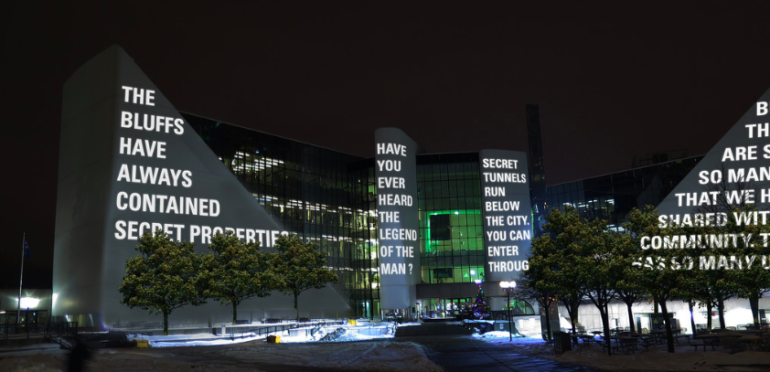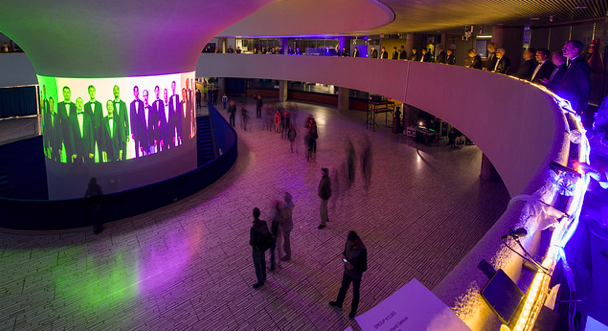
A project rendering for “Everything I Wanted to Tell You” by artist Hiba Abdullah, curated by Alyssa Fearon, for tomorrow’s Nuit Blanche event. (Flickr/City of Toronto)
Christina Zisko
Toronto will be a city that doesn’t sleep tomorrow night when Nuit Blanche takes over.
From 7 p.m. Saturday to 7 a.m. Sunday, the all-night celebration of contemporary art will be open to the public, with installations in both the west and east end, Scarborough and downtown.
“It, in a really exciting way, animates spaces that are often empty or super quiet, or in some cases a bit forbidden, places you’re not allowed to go. And they become this amazing gallery-like installations that change how I see the city that I wander through every day,” said Jeanne Holmes, the programming supervisor for Nuit Blanche Toronto.
“It’s mandate is to present contemporary visual art projects in the public realm, free to the public,” she said.
Nuit Blanche partners with major institutions like the Art Gallery of Ontario, the Royal Ontario Museum and the Bata Shoe Museum, as well as local artists and artist-run centres, who all open their doors to the public for free, Holmes said.
This is the 13th year for the art event, which will contain pieces and installations by more than 400 artists, according to a press release from the city of Toronto.
“Our audience has grown significantly since we started in 2006. The first year we had 400,000 people which we thought was incredible, we never expected that many. Last year we had over a million people come through the exhibitions in the 12 hours,” Holmes said.
The event allows people to see their city and its potential in a brand new way, she said.
“We do lots of work in the financial district that has a particular kind of energy during the day and at night it changes completely. It’s almost a ghost town. Then to fill the streets with people who are kind of taking over Bay Street, taking over the lobby spaces of places that are the seat of power in some ways,” Holmes said.
The ability to bring art to Torontonians who may not otherwise experience this type of culture is exciting for Holmes.
“The part that for me as, I like to say, a civil servant, whose responsibility it is to deliver arts and culture to the public, 60 per cent of those people don’t go to galleries or museums on a regular basis, in fact often never go. So the first time they’re experiencing contemporary and fairly sophisticated contemporary visual art is often, literally on the streets of their city,” she said.

